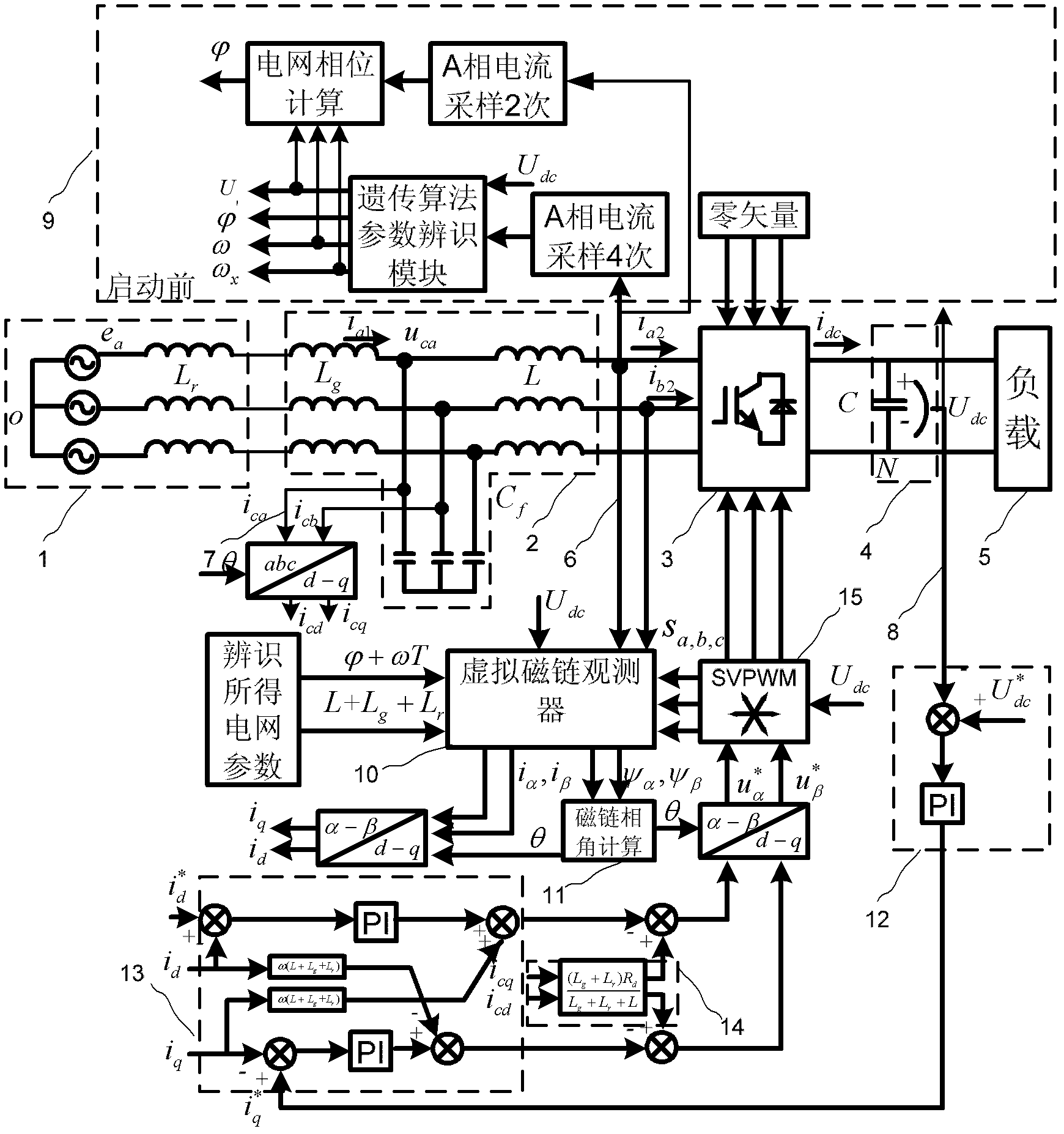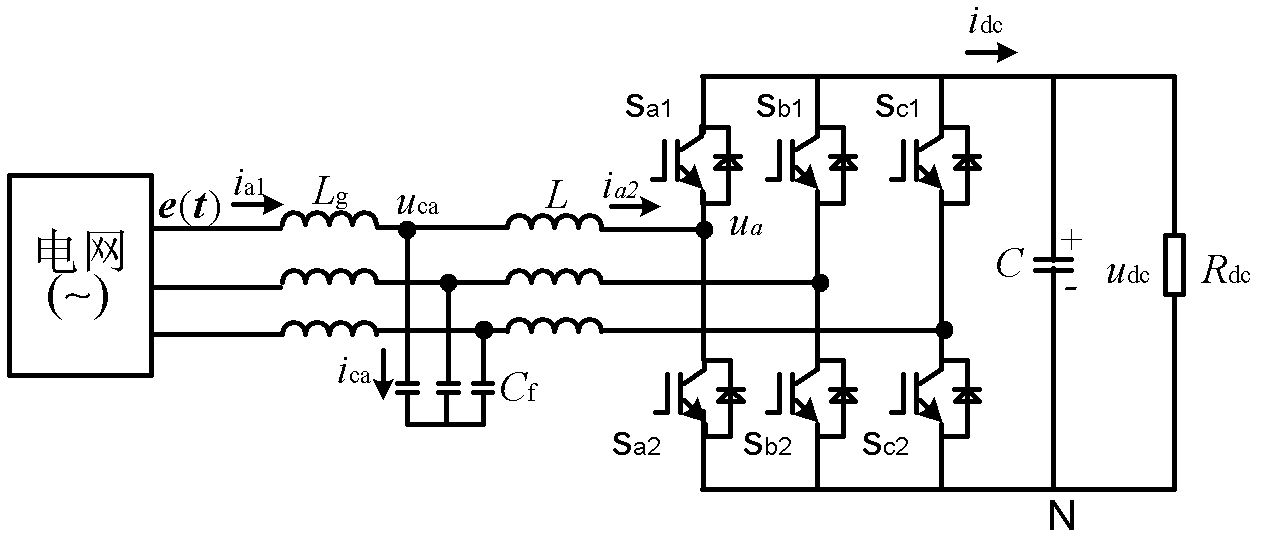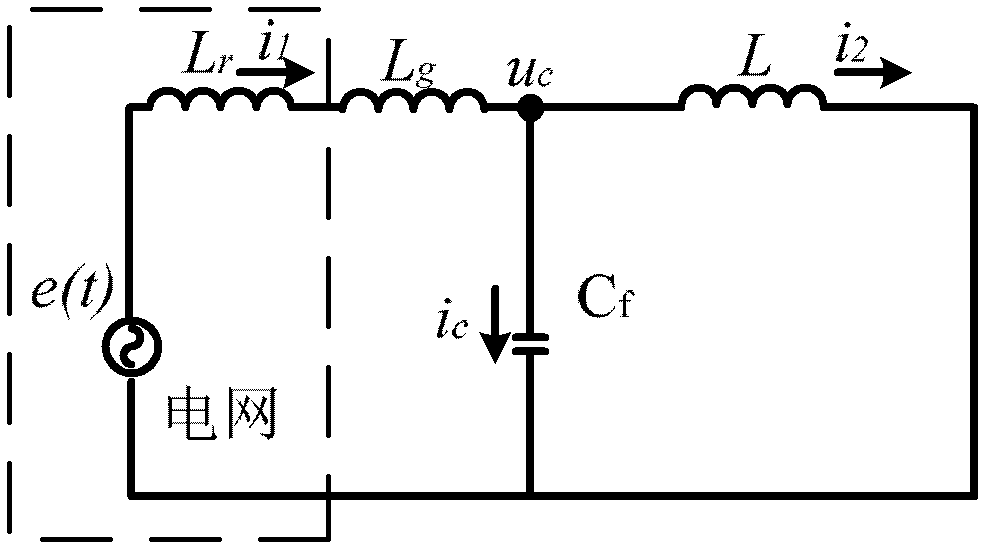L-capacitance-L (LCL)-filtering-based controlled rectifier parameter identification method
A parameter identification and rectifier technology, which is applied in the field of controllable rectifier parameter identification based on LCL filtering, can solve problems such as inaccurate system orientation, out-of-control startup, too many controllable rectifier sensors, etc., to achieve accurate observation and facilitate stable operation Effect
- Summary
- Abstract
- Description
- Claims
- Application Information
AI Technical Summary
Problems solved by technology
Method used
Image
Examples
Embodiment 1
[0040] Embodiment 1: The controllable rectifier parameter identification method based on LCL filtering includes five steps: 1. Acquisition process of short-circuit current; 2. Parameter identification based on genetic algorithm; 3. Acquisition of the initial phase angle of the power grid at startup ;4. Real-time estimation of grid virtual flux linkage value under LCL filter condition; 5. Acquisition of system orientation angle under LCL filter condition;
[0041] Specific steps are as follows:
[0042] Step 1. The process of obtaining medium and short-circuit current is:
[0043] Step 1.1, sampling the DC bus voltage, which is the voltage obtained by uncontrollable rectification at this time;
[0044] Step 1.2. Send a zero-vector signal (0, 0, 0) or (1, 1, 1) with a duration of T to the 6 power devices of the three-bridge rectifier circuit, which is equivalent to all the upper or lower bridge arms of the rectifier circuit Short circuit, at this time the circuit is equivalent...
PUM
 Login to View More
Login to View More Abstract
Description
Claims
Application Information
 Login to View More
Login to View More - Generate Ideas
- Intellectual Property
- Life Sciences
- Materials
- Tech Scout
- Unparalleled Data Quality
- Higher Quality Content
- 60% Fewer Hallucinations
Browse by: Latest US Patents, China's latest patents, Technical Efficacy Thesaurus, Application Domain, Technology Topic, Popular Technical Reports.
© 2025 PatSnap. All rights reserved.Legal|Privacy policy|Modern Slavery Act Transparency Statement|Sitemap|About US| Contact US: help@patsnap.com



